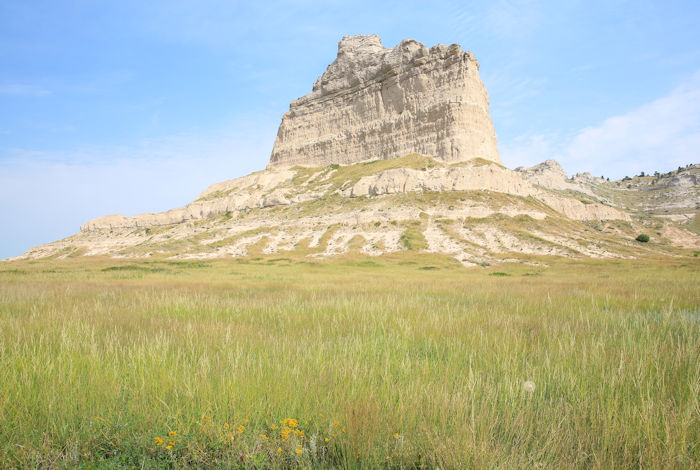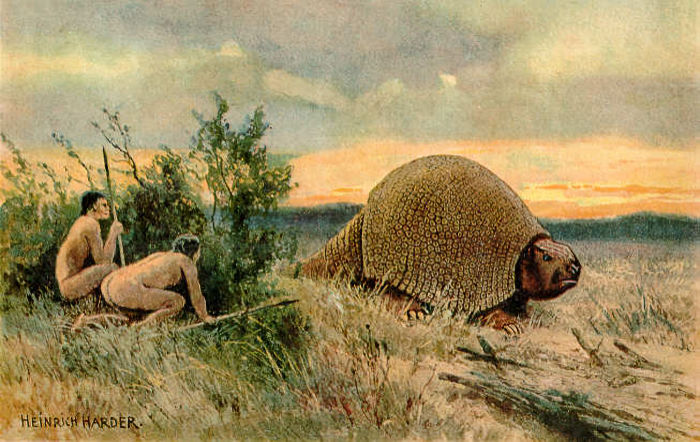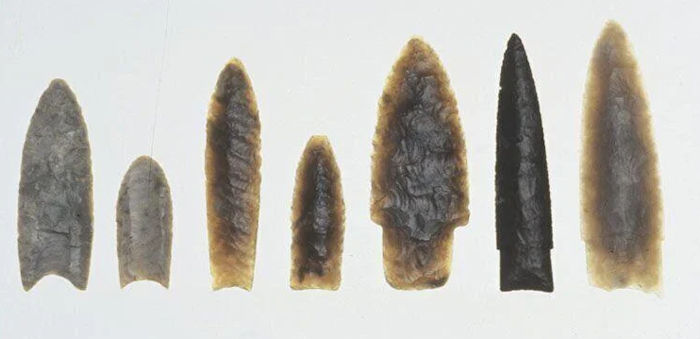Jan Bartek – AncientPages.com – When the first humans reached The Great Plain, USA, remains unknown. There are several theories attempting to answer this historical question, but many scientists think this complex subject requires solid archaeological and scientific studies.

Scotts Bluff National Monument in Nebraska, USA. Credit: Adobe Stock – traveller70
Could certain archaeological sites in Nebraska help scientists solve this long-standing mystery? There are currently 11,450 recorded archeological sites in Nebraska and new ones are added to the lists regularly. Scientists have found rare artifacts at some of these sites, and they suggest these ancient objects may offer proof humans reached the Great Plains much earlier than previously thought, perhaps even 18,000 years ago.
Other researchers are more cautious arguing one should not jump to conclusions and further research is needed to determine the age of the artifacts.
As reported by the Grand Island Independent, “a bone and bone flakes from a mammoth’s shoulder on display at the Nebraska History Museum in Lincoln raise the still-contested question of how long humans have lived in the Great Plains.
Radiocarbon dating of the bones found in Frontier County indicates the animal lived 18,000 years ago. And some researchers say the flakes could only have been made by a human chipping away at the bone with a stone tool.”
According to most scientists, early human occupation in Nebraska occurred between 7,000 to 9,000 years ago.
“Before Europeans came to America, and before Native Americans grew their own crops, ancient Nebraskans hunted animals and gathered plants. These people traveled all over the Plains, following herds of bison, searching for plants, and finding stone to make their tools. There were no metal tools back then.
The most ancient Nebraskans are called Paleo-Indians by archaeologists. Paleo-Indians were Native American people who lived in North America 8,000 years ago or more. There are places in North America where some Paleo-Indian people lived over 12,000 years ago! Paleo-Indians lived with ancient large animals, like woolly mammoths and ancient varieties of very large bison. These big animals have since become extinct.” 1

Paleo-Indians hunting a glyptodont by Heinrich Harder (1858–1935). Credit: Public Domain
One interesting archaeological site is Lime Creek where scientists found bone tools estimated to be 40,000 years old. 2
The mammoth bones unearthed at the “La Sena” site along the shore of Medicine Creek Reservoir have the potential to re-write the ancient history of human presence in Nebraska. Scientists who subscribe to this theory suggest the “skeleton is an indication of human activity also point to the unusual way some accompanying bones were smashed open. A human was trying to get to the nourishing marrow or use the sharp bone fragments as cutting tools, these scientists believe.” 3 If true, this would imply humans were present in Nebraska about 5,000 earlier than previously thought.
However, far from everyone is convinced this theory holds water.
Retired state archeologist for Nebraska Rob Bozell says he is convinced “that people have been living in what is now Nebraska for at least 13,000 years and that archeological evidence shows, at various points, rapid societal changes.
Spearpoints and other stone tools found in blowouts throughout the state and along waterways are the earliest definitive evidence of human activity in Nebraska, he said.
The tools date to the Clovis culture, which gets its name from the site where such spearpoints were first discovered, near Clovis, New Mexico. Left by hunters, similar spear points have since been confirmed across North America, including Nebraska.” 3
“It’s clear people have been here a very long time,” Bozell said. “If you think of 13,000 years as the length of your arm, from your shoulder to your finger tip, the period when European-Americans have been here is your fingernail.”
Any group that has lived here has migrated in, scholars say.
About 2,000 years ago those who lived in Nebraska were mostly hunters and they lived in small groups.

Paleo-Indian spear points, found in Nebraska date from between 8,000 and 11,500 years ago. Credit: History Nebraska and Nebraska Game and Parks Commission.
“Relatively suddenly, the lives of people across North America, including in Nebraska, began to change, Bozell said. Their lives became more settled, less migratory, he said. They were living in one place longer and in larger groups. They farmed more.
Pottery began making an appearance, a significant innovation because it provided another manner of cooking and storing food.
For reasons that aren’t certain, another acceleration in communal living occurred about 1,000 years ago, and from there, “things really took off,” Bozell said.
Suddenly, people were living in much larger communities and sturdier housing.
“They lived in houses, framed, timbered houses,” Bozell said. “Not temporary huts or tipis, but houses.”
People began farming in earnest, and corn became an even more integral part of life. “ 3
“The oldest artifacts discovered in Nebraska are Clovis spear points which date to about 13,500 years ago. These people are likely distant ancestors of modern Native Americans. Although new information and theories about the peopling of the Americas are constantly emerging and it is probable people were in North America before Clovis, there have been no pre-Clovis sites definitively found in Nebraska to date.
See also: More Archaeology News
The most common Native American groups that have or still live in Nebraska include: Omaha, Winnebago, Ponca, Ioway, Oto, Missouria, Santee, Pawnee, Sac and Fox, Cheyenne, Arapaho, Apache, Kiowa, Crow, and Lakota. Most of these groups came to Nebraska after 1700 although the Pawnee likely had some presence in Nebraska for over 1000 years. While we know people have been in Nebraska for at least 13,000 years, it is only sites dating to the past 1000 years or less that can be affiliated with specific groups of ‘tribes.’” 4
Claims of human presence in Nebraska about 18,000 years ago may be valid, but more evidence is needed to confirm this thought-provoking theory.
Written by Jan Bartek – AncientPages.com Staff Writer
Expand for references
- Damita Hiemstra and Eric Kaldahl – Pre-1500 Lime Creek Site: A Glimpse of Early Native Americans, Nebraska Studies
- Susan B. Martinez Ph.D. – The Mysterious Origins of Hybrid Man: Crossbreeding and the Unexpected Family Tree of Humanity
- Nancy Gaarder Omaha – Uncovering history: Archaeological sites provide window to Nebraska’s past, The Grand Island Independent
- Nebraska Archaeology





